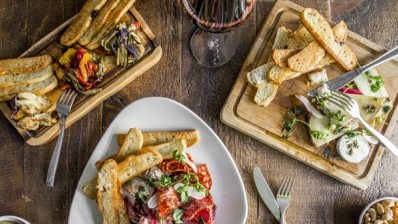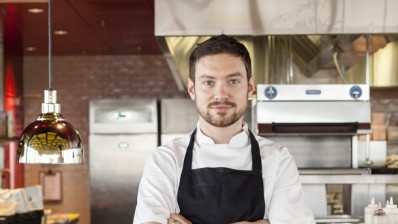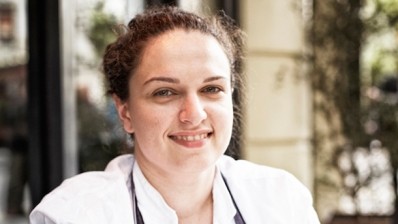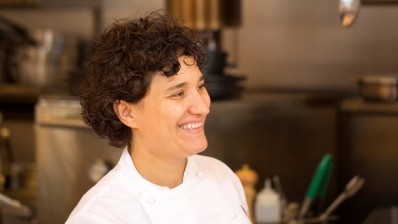SMALL TALK
Kate Hawkings on creating wine lists and new restaurant Bellita
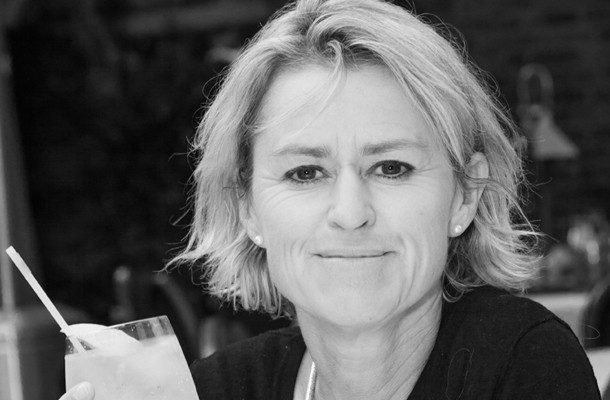
Tell us about Bellita…
We’ve been billing it as Bell’s Diner’s naughty little sister. It’s in Clifton, Bristol, in the space that used to house Flinty Red. It’s more wine bar than restaurant and is owned by three people: myself and Connie Coombes (who own Bell’s Diner) and Bell’s head chef Sam Sohn-Rethel. He’s been instrumental to the success of Bell’s and has a great restaurant CV that includes The River Café, Moro and St John.
The head chef of Bellita is Joe Harvey, who was Sam’s sous chef at Bell’s.
What ’s on the menu?
It certainly shares the same DNA as Bell’s. Sam is influenced by the cooking of Spain and the Middle East. But the food is more bar-led. The idea is for people to come in and have a few plates and the menu has been constructed by both Sam and Joe with that in mind. We’re also going to serve food later than Bell’s on busier nights. The menu currently includes pig’s cheeks cooked with Pedro Ximénez as well as
a stew made with white beans, ham hock, morcilla, chorizo and botifarra.
What’s the area like?
It’s a bit more affluent than Montpelier (the Bristol suburb in which Bell’s Diner is located) and there’s a lot more passing trade. There are lots more restaurants around us too. The Bristol dining scene has exploded over the past few years. I think a lot of it is down to the availability of great produce, meat and dairy in particular. We’re not wild about chains, either, which has given the independents a real boost. Bristol has a low-budget feel; we don’t really do swanky, which is just as well because we opened Bellita on a shoestring.
You write very interesting wine lists…
I find a lot of lists boring. I’m not sure how much use descriptions such as ‘green apples’, ‘fresh raspberries’ and ‘a hint of oak’ are to people who aren’t tasting wine all the time. I like to keep things fun and include useful details about the wine, such as where it’s from, who makes it and what grapes are in it. It’s surprising how often this information is omitted. And if I can get the odd double entendre in, then all the better.
The wine lists at both your establishments top out at £50. Why do you keep prices so low?
It’s Bristol. People aren’t flushed with cash. We do a cash mark up on every bottle, which means the more you spend the better value it is. I want my customers to drink nice wine. People are used to getting wine that’s got a 70 per cent -80 per cent mark up, so they’re generally impressed with the wine we serve them. This keeps them coming back.
What’s the market like for biodynamic and natural wines in Bristol?
Bristol is quite a green place, but I don’t know how many people are buying such wines just because they fall into that category. I tend to be drawn to wines made with a skilful hand in the vineyard and a light touch in the winery. ‘Natural’ doesn’t really mean anything anyway. Some people dismiss all ‘natural’ wines out of hand. Tim Atkin calls them ‘primitive wines’ and Jay Rayner is famously rude about them. This seems insane. Others aresuch evangelical fans they are happy to drink things I’d consider pretty filthy. There are good and bad wines made naturally as well as conventionally.
Why have you opted for such an eclectic selection?
We’re not a fine-wine restaurant. We’re not producing a bible of big names. That wouldn’t fit with the spirit of our places. Less obvious wine producing areas often offer wine at a very good price. If you stick to traditional regions you do pay a premium.
Why does the list at Bellita only contain wines made by female producers?
I wanted to have a focus of some sort. It really wasn’t that hard to find great wines made by women. One of my favourites is Loreline Laborde’s Les Granges Paquenesses ‘La Pierre’ – a biodynamic savagnin from the Cotes du Jura in eastern France. It’s very limited and we’re the only place to stock it apart from Yotam Ottolenghi’s restaurants. The wine lists at both our venues are quite tight. At Bellita we only have 11 whites and 11 reds. We work with a surprising amount of suppliers, though.
How did you get into restaurants?
I was an art student in London and did waitressing. I loved the whole business of eating and drinking so I started writing about them as well as working in them. I’ve worked all over Bristol but the first restaurant I owned was Bell’s Diner, which Connie and I opened two and a half years ago.
How do you balance being a restaurateur with your writing career?
I’ve got a very short attention span. Juggling two careers is a nightmare but they complement each other in the sense that writing is quite solitary and working in restaurants is anything but.
